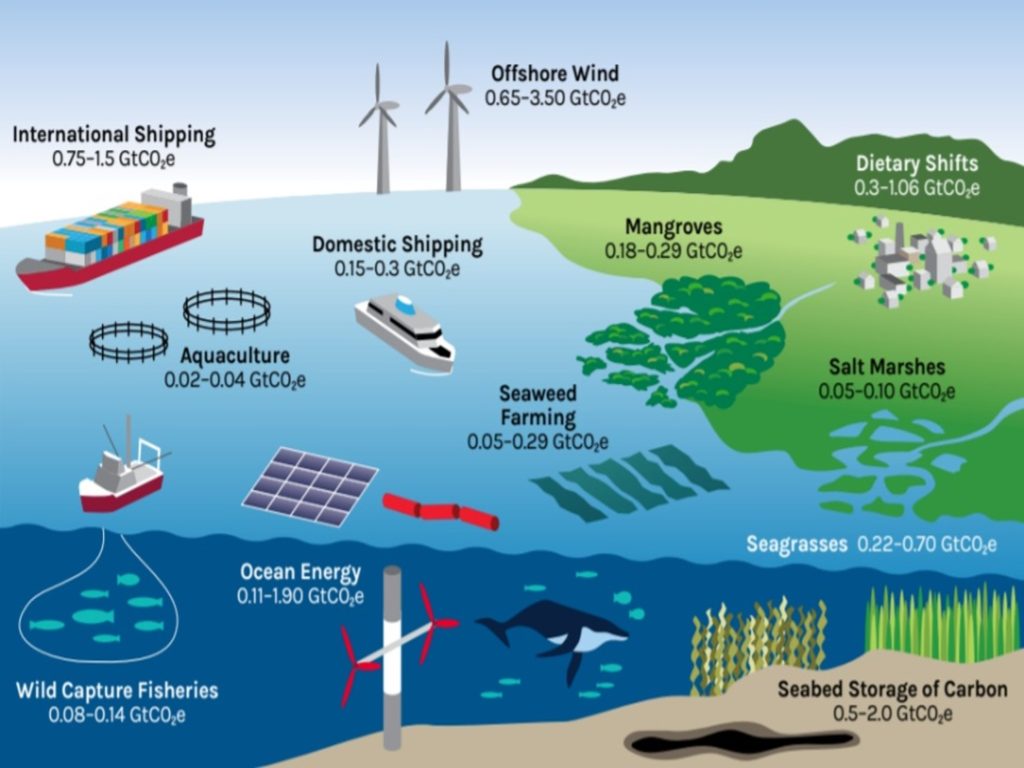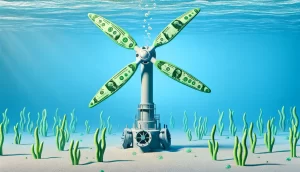Ocean tech startups live and die by their ability to innovate quickly and grow. No one would argue against the claim that a tech startup needs money to fuel this growth. Whether it’s to buy equipment, pay salaries of staff, or purchase raw materials, financial capital is critical for success. But there is such a strong focus on trying to find investors, grants, and other sources of funding that sometimes entrepreneurs forget about other forms of capital that are equally if not more important for ocean tech innovation.
The ocean tech startup community could certainly benefit from more financial capital, but for tech startups that build their businesses around disruptive innovation, more emphasis needs to be placed on two oft forgotten ingredients that fuel innovation: social and human capital.
Innovation foundations
Before I dive into human and social capital and their role in innovation, we need to ask the question “what is innovation?” It’s a simple question with a not-so-simple answer. For our purposes, we’ll define innovation as the process or result of creating something new to overcome a challenge. The process of innovation leads to new ideas, methods, and technologies that solve problems, often resulting in economic growth when the innovators sell their innovation to others with similar problems.
In our increasingly complex world, an innovation is rarely the result of a lone genius working in isolation. Rather it is the result of groups of skilled people collaborating on a common challenge. In the book “Where Good Ideas Come From” author Steven Johnson argues that innovation thrives in large collaborative networks of people and organizations. Or in other words: an innovation is the result of a process that depends on the interactions and exchanges of knowledge involving a large diversity of actors facing a common challenge or need. The development of novel COVID-19 vaccines is an excellent case study exhibiting this point. The vaccines were only developed as fast as they were due to international collaboration of hundreds of scientists sharing information and working towards a common objective.
Social capital, human capital, and innovation
As we’ve seen, innovation is the result of interactions amongst groups of people with specialized knowledge focused on common challenges. There are no shortage of problems and challenges afflicting the ocean, many of which can be solved with new technologies. Moreover, the ocean is a common resource that serves the needs of countless communities and stakeholder groups. Consider decarbonization of the maritime sector; to innovate the solutions we’ll need, new low-emission fuels for ocean-going vessels as an example, will require strong connections between multiple ports, fuel producers, vessel operators, and regulators all working together. In other words, spurring innovation in ocean tech depends on social and human capital.
Social capital, or “who you know”, is defined by the OECD as “networks together with shared norms, values and understandings that facilitate co-operation within or among groups”. These links could be between friends, family, colleagues, organizations, or even other networks. It is hard to measure or quantify as we do for financial capital, but it does have value to people and organizations. In fact, this is the central premise of Robert Putnam’s groundbreaking book “Bowling Alone”.
But not all networks are equally valuable. Collaboration with individuals or groups that possess subject matter expertise or unique perspectives on a problem can often be more valuable than collaborating with individuals or groups that don’t. Which leads us to human capital.
“What you know” is human capital. It is an intangible resource possessed by individuals and groups within a population or organization that includes all the knowledge, training, abilities, experience and cumulative know-how. Together, these resources represent a type of wealth that can be used as a competitive advantage by the person, country, or organization. Human capital also has value and while it may be intangible, it can be measured, see this guidance from the United Nations for example.
Innovation is somewhat serendipitous, but it is unlikely to occur without human and social capital. These two forms of capital are critical to innovation no matter the industry or challenge, but they are particularly important when working on ocean solutions.
Ocean tech innovation is high-leverage
Innovation is more important for ocean technology than it is for other industries or sectors for one main reason: climate change.

As recently reported in articles in the journal Nature or through the High Level Panel for a Sustainable Ocean Economy, the ocean is one of the most effective weapons in our arsenal to combat climate change. Ocean-based solutions, whether its maritime transport, sustainable aquaculture, offshore renewable energy, or even carbon dioxide removal, could provide up to one-fifth of the GHG reductions required to meet the emissions reductions specified in the Paris Agreement. Realizing such emissions reductions requires new technologies and then employing them on a truly oceanic scale. This in turn means we need to work across the geopolitical boundaries that artificially divide the ocean into a patchwork of fiefdoms and technology silos. The only way to effectively work across these boundaries is to build trusting relationships with knowledgeable people that are working to implement these solutions across the world. We need to appreciate the ocean for what it is: a single ocean system.
Innovation hubs
There are myriad public and private organizations supporting innovation in the blue economy to solve problems such as reducing GHG emissions attributed to maritime transport, remediating ocean plastic pollution, curtailing overfishing, or reversing ocean warming. Such organizations include maritime cluster organizations, startup incubators and accelerators, government agencies, and competitions. In fact, the number of such groups that have been founded to support ocean technology innovation has increased dramatically since 2015 and has been growing steadily ever since. There are now over a 130 private organizations all over the world working on various blue economy innovation needs.

These organizations generally have three things in common: expertise in particular ocean technology or discipline; keen awareness of the issues facing their geographic region; and networks of individuals willing to serve as mentors and advisors. In other words, they are concentrations of social and human capital for ocean technology, also known as innovation hubs.
Networks between networks
As the number of innovation hubs grow in both number and scope, these organizations must work together to support ocean tech innovation by building interconnected networks. These organizations must grow their social capital by hosting conferences, coffee-chats, forums, workshops, and other events that bring people together around the shared purpose of using ocean tech to solve society’s problems.
At the same time, these organizations need to be investing in human capital by educating entrepreneurs on ocean challenges. The more people innovating in this space, the more opportunities there are for cross-pollination of ideas. Organizations can increase human capital by offering opportunities for individuals to develop new skills, take online classes, shadow a colleague, or volunteer.
2021 marks the beginning of the UN Decade of the Ocean. Now more than ever before we will rely on the ocean to provide solutions to some of society’s most pressing challenges. To develop the ocean solutions we need we must foster innovation with high levels of human and social capital to ensure that the best ideas, no matter their origin, are brought into the world. Some extra money wouldn’t hurt neither.




